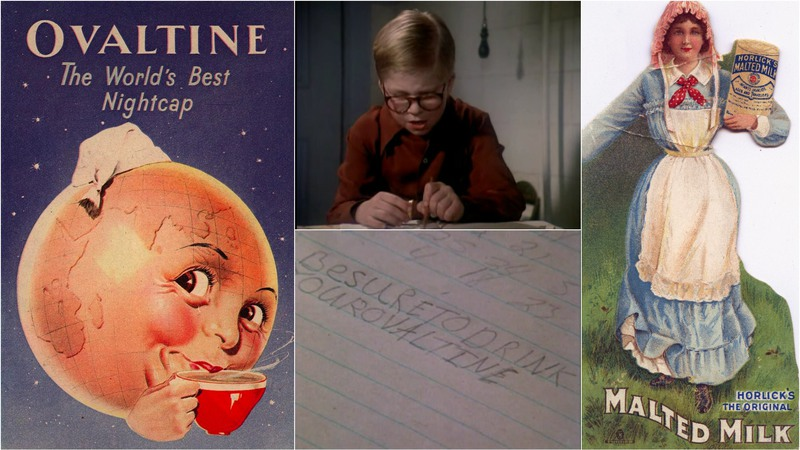The Enduring Appeal Of Nightcaps Ovaltine And Horlicks
Many adults—especially those in British Commonwealth countries—will remember drinking either Ovaltine or Horlicks as a child, usually served hot at bedtime. For generations, these malted milk drinks were believed to be a surefire way of putting even the most rambunctious kids to sleep, which of course made them popular with parents.
Neither drink has any ingredients that actually cause sleepiness, but the combination of the hot milk warming your stomach and the velvety mouthfeel of the malt definitely contributes to a sense of contentment and drowsiness. When I was a kid, that moment of weightlessness before nodding off tasted like the creamy vanilla-wheat flavor of Horlicks.

The reputation that both Horlicks and Ovaltine have for inducing sleep is ironic when you consider that both drinks were originally conceived as fortifying energy drinks meant to provide extra nutrition for children, the elderly, and sick people. Horlicks was included in the food rations of polar expeditions and given to soldiers during the first World War. Ovaltine was served to athletes during the 1932 Olympic Games and taken along Edmund Hillary's expedition up Mount Everest.
Horlicks had a head start in 1873, when two English immigrants, brothers William and James Horlick, set up a factory in Chicago to produce a nutritional supplement called Diastoid. It was so successful that in the 1880s, they created a powdered drink version and called it Horlicks, promoting it as a nutritional drink for "infants, invalids, the aged and travelers."
They were soon followed by Ovaltine, which was invented in 1904 in a Swiss laboratory by chemist Dr. Georg Wander and his son, Albert. They developed a drink using barley malt and named it Ovomaltine, whose name is a blend of "ovo" (from the Latin word "ovum") and "malt." However, a misspelling in a trademark application for the United Kingdom caused Ovomaltine to become Ovaltine, which is how the drink is mostly known outside of Switzerland.
Unlike Horlicks, which was sold widely from the start, Ovaltine was originally only available in pharmacies as an energy booster for fatigued people and was mostly consumed by the upper and middle classes. However, the drink grew so popular that it was eventually exported overseas and made more accessible to a wider range of people.
Most people's preferences for either Horlicks or Ovaltine seem to depend on what they were used to drinking in childhood. I came to Ovaltine later in life, and I initially found the chocolate flavor off-putting. I was expecting something closer to hot cocoa, and Ovaltine tasted slightly chalky to me at first, despite the creaminess of the malt. Conversely, people I know who were regular Ovaltine drinkers have expressed their disgust at Horlicks, saying it's like drinking the inside of a Whopper candy, though I don't think this is a negative thing at all.
In the past decades, both brands have slowly lost ground in the U.S., though they've tried to compensate by launching new flavors and low-calorie versions and producing candies like Ovalteenies and Horlicks Malties. I've never had a Maltie, but Ovalteenies are surprisingly better than Ovaltine. The malt flavor comes out quite strongly though, which might be too cloying for some.
None of these attempts seem to have made much of a difference in the U.S. market, however. With all the talk about how Americans are culturally stuck in a nostalgia trap and are gravitating toward things that remind us of less stressful times, it's interesting that this hasn't benefited Ovaltine or Horlicks. (When's the last time you heard the line, "More Ovaltine, please!"?) Perhaps nostalgia only extends to things that we cared passionately about as kids, like Nutella. Or maybe we just don't like being reminded of the period in our lives when we had no choice over what time we wanted to go to bed and only had a hot drink as consolation.
However, while Horlicks and Ovaltine are victims of their own successful marketing in the U.S., they're still doing well in other markets. Horlicks is sold widely in the U.K. and in India—its two biggest markets—and Ovaltine is so popular in Brazil that you can get it in milkshake form at fast food restaurants. The Brazilian example might be the way forward for these two brands. Ovaltine is great added to desserts, and there is a proliferation of cookie and brownie recipes on the internet featuring Ovaltine as a key ingredient.
I don't drink Horlicks on its own anymore, but I still like adding a couple of teaspoons to smoothies for that familiar malt taste. Horlicks has figured this out as well—its website offers suggestions on incorporating the malted powder into some unexpected dishes, including spaghetti carbonara and roast sausages. Maybe, like other objects with a strong nostalgia factor, Ovaltine and Horlicks simply need another medium in which they can be consumed.
